Confirmed Presentations
Status: 24 November 2022
If you see this text you are logged in. This means that in the list below you will see *Reg’d below the names of authors who are registered, *Reg’d + paid if they have also paid, and *Reg’d – free if that applies. The public will not see this, nor will you, if NOT logged in.
As these remarks are entered manually, there may be some lag in updates.
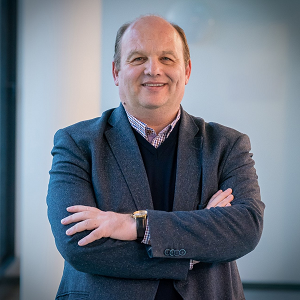
Valter Mavrič
KEYNOTE ADDRESS
Accessibility for the deaf and hard of hearing through language technology: real-time speech-to-text and machine translation tool of the European Parliament
The European Parliament wants to close the perceived gap with citizens by making Parliament more accessible for readers, listeners and viewers of its content in all 24 languages. The translation service of the European Parliament (DG TRAD) contributes to achieving this goal through its Citizens´ language policy, which focuses on multilingual clear language in text, audio and video. By implementing this policy, we aim to ensure that no one is excluded or left behind.
In terms of accessibility, DG TRAD entered into an innovation partnership with commercial operators to develop an online real-time speech-to-text and machine translation tool for 24 languages to facilitate the accessibility of parliamentary debates for the deaf and hard of hearing. Currently, the tool can automatically transcribe and translate multilingual debates into 19 official EU languages in real time. The presenter will explain the evolution of the tool, present its functioning and the lessons learned, share the experience gained from recent testing in real life parliamentary settings and present the future steps of the project.
Valter Mavrič is Director-General of the Translation Service (DG TRAD) at the European Parliament (since 2016), where he was previously acting Director-General (from 2014), Director (from 2010) and Head of the Slovenian Translation Unit (from 2004). With an MA in applied linguistics and further training in translation, interpretation, linguistics and management, he has a long experience as manager, translator, interpreter and teacher of languages. He works in Slovenian, Italian, English, French, and Croatian and is currently preparing a PhD in strategic communication.instructional design, and in-booth CAI tool use.
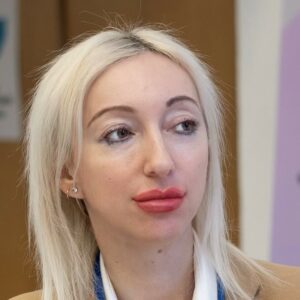
Olga Egorova
Algorithms and technologies of training translators and interpreters for the Industry 4.0 Economy
The training of a translator/interpreter has changed a lot in the last decades. The 2020 pandemic further outlined new trends – adding possibilities of carrying out both preparation and translation/interpretation itself remotely.
The presentation will cover six major drivers of change in today’s translation industry: machine learning; machine translation; quality control; data; interoperability of instruments; education (training). Machine learning will be applied to translation more and more and it will open up new perspectives for the translation business and raise quality assessment to a new level.
The next few years are likely to drive even more innovation in the field of translation memory management to make it smarter and to cover different forms of information display, especially phonetic language data, by expanding the potential of metadata. For sure, artificial intelligence and neuro-technologies of the new generation will be involved as well. Their development is facilitated by post-editing, which helps to identify imperfections in the work of automated translation systems.
All the above leads us to the necessity to revisit the teaching standards in all the three areas of our profession – translation, interpreting and terminology.
Olga Egorova
Professor Olga Egorova is the Director of the Project Office on International Cooperation at Moscow State Linguistic University and a professor of conference interpreting at this university.
She is a Council Member of the International Federation of Translators (FIT), External Partnerships Standing Committee Chair (FIT), Education and Professional Development Task Force Chair (FIT). Olga Egorova is also a Board member of the Union of Translators of Russia.
She has been a keynote speaker and an invited presenter at numerous events in the European institutions (the European Commission and the European Parliament), the UN, WIPO, ILO and other international organizations.
Editorial Member of Babel journal. Peer reviewer of the Cuadernos de Rusistica Espanola (papers on translation, languages and literary studies).
Olga Egorova is the authors of 2 monographs, a textbook and more than 100 articles in national and international journals. Has 3 registered IPs. Is a holder and winner of a number of international grants and projects, scientific supervisor of several innovative enterprises.

Rafał Jaworski

Andrzej Zydroń
Automated translation analysis using a multi-faceted framework
Computer-assisted Translation tools could benefit a lot from the possibility of performing on-line analysis of the translated texts. By automatically determining the word and phrase alignments between the source sentence and the translation it is possible to provide the translator with a comprehensive and usable set of suggestions. Modern NLP allows for collecting an abundance of data that enables word alignment analysis. The problem is – how to put it all together? In this paper we present Multi-faceted Translation Analysis – a multi-stage algorithm capable of making the most of the linguistic data. Its key applications include: automatic post processing, translation evaluation or bilingual terminology extraction.
Rafał Jaworski, PhD, works as Linguistic AI Expert at XTM International. He is an academic
lecturer and scientist specializing in natural language processing techniques. He develops
robust AI algorithms for the needs of computer assisted translation. These include, among
others, automatic lookup of linguistic resources and automatic post editing. At XTM
International he leads a team of young and talented AI specialists who put his visions and
ideas into practice.
Andrzej Zydroń, MBCS CITP, CTO @ XTM International
Andrzej Zydroń is one of the leading IT experts on Localization and related Open Standards. Zydroń sits/has sat on the following Open Standard Technical Committees:
- LISA OSCAR GMX
- LISA OSCAR xml:tm
- LISA OSCAR TBX
- W3C ITS
- OASIS XLIFF
- OASIS Translation Web Services
- OASIS DITA Translation
- OASIS OAXAL
- ETSI LIS
- DITA Localization
- Interoperability Now!
- Linport
Zydroń has been responsible for the architecture of the essential word and character count GMX-V (Global Information Management Metrics eXchange) standard, as well as the revolutionary xml:tm standard which will change the way in which we view and use translation memory. Zydroń is also head of the OASIS OAXAL (Open Architecture for XML Authoring and Localization technical committee.
Zydroń has worked in IT since 1976 and has been responsible for major successful projects at Xerox, SDL, Oxford University Press, Ford of Europe, DocZone and Lingo24.
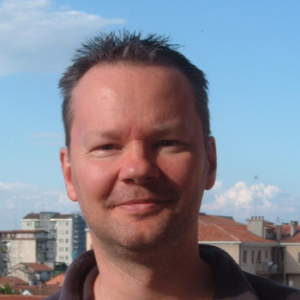
Michael Farrell
Do translators use machine translation and if so, how?
Many academic publications seem to assume that the most natural way to include machine translation in a translator’s workflow is through machine translation post-editing (MTPE). This is by no means the only way a translator can use machine translation during their work, and there are also some professional translators who do not use machine translation at all for various reasons. To gain insight into the proportion of translators that use machine translation and the various ways they do, the presenter has set up an anonymous survey, scheduled to close on 21 October 2022. Due to its international nature, the survey is in English. The results of the survey will be written up and analysed in a paper for publication in the conference proceedings and presented during TC44. The survey can be found here: https://www.transcreate.it/do-translators-use-machine-translation-and-if-so-how/
Michael Farrell is an untenured lecturer in post-editing, machine translation, and computer tools for translators at the International University of Languages and Media (IULM), Milan, Italy, the developer of the terminology search tool IntelliWebSearch, a qualified member of the Italian Association of Translators and Interpreters (AITI), and member of the Mediterranean Editors and Translators association.
Besides this, he is also a freelance translator and transcreator. Over the years, he has acquired experience in the cultural tourism field and in transcreating advertising copy and press releases, chiefly for the promotion of technology products. Being a keen amateur cook, he also translates texts on Italian cuisine.
He spoke at TC36 on solving terminology problems with IntelliWebSearch, at TC39 on building a custom machine translation engine as part of a postgraduate university course, and at TC40 on Raw Output Evaluator, a freeware tool for manually assessing raw outputs from different machine translation engines.

Vilelmini Sosoni

Maria Stasimioti
Educating translators in the era of translation as human-computer interaction: How are we faring?
Lately, technological advances have revolutionised the translators’ world, changing the ways translators work, as well as the technology context in which they operate (TAUS, 2018; do Carmo, 2020).
New roles, such as post-editors, linguistic assets curators, translation and/or localization workflow engineers etc., are emerging (Enríquez Raído, 2016), while professional translators are seen as “highly multitasking agents whose work requires advanced language skills, advanced information literacy, and considerable technological and instrumental competence” (ibid: 970).
As a result, translation programmes around the world incorporate translation technology modules in their curricula. A question that emerges, though, is whether these are enough to equip students with the necessary skills and competences, but also with the right mindset to dive into these new roles.
This study attempts to answer this question on the basis of\ feedback received from three cohorts of undergraduate and postgraduate students in Translation at the Ionian University in Greece. Questionnaires are used to determine whether students feel ready to ride the technological wave or do so in their daily jobs or whether they remain skeptical or feel inadequate to take on the new roles. Their feedback is also used to determine how they could be better equipped for the job market.
Dr Vilelmini Sosoni is an Assistant Professor at the Department of Foreign Languages, Translation and Interpreting at the Ionian University in Greece. She has taught Specialised Translation in the United Kingdom at the University of Surrey, the University of Westminster and Roehampton University, and in Greece at the National and Kapodistrian University of Athens, Metropolitan College and the Institut Français d’Athènes. She also has extensive professional experience having worked as a professional translator, editor and subtitler. She studied English Language and Literature at the National and Kapodistrian University of Athens and holds an MA in Translation and a PhD in Translation and Text Linguistics from the University of Surrey. Her research interests lie in the areas of the Translation of Institutional and Political Texts, Corpus Linguistics, Audiovisual Translation and Accessibility, as well as Machine Translation and Cognitive Science. She is, among others, a founding member of the Laboratory “Language and Politics” of the Ionian University and the Greek Chapter of Women in Localization and a member of the “Research Centre for Translation and Intercultural Studies” of the University of Roehampton.She is also a member of the Advisory Board and the Management Board of the European Master’s in Technology for Translation and Interpreting (EM TTI) funded by Erasmus+. She has participated in several EU-funded projects, notably Resonant, Trumpet, TraMOOC, Eurolect Observatory and Training Action for Legal Practitioners: Linguistic Skills and Translation in EU Competition Law, while she has edited several volumes and books on translation and published numerous articles in international journals and collective volumes.
Maria Stasimioti is a PhD candidate at the Department of Foreign Languages, Translation and Interpreting at the Ionian University. She holds a BA in Translation Studies and an MA in Theory and Didactics of Translation from the same university. She has been working as a freelance translator and proofreader since 2010. She has taught Computer-Assisted-Translation and English for Specific Purposes (ESP) at the Ionian University and participated in the EU-funded project TraMOOC (Translation of Massive Open Online Courses, https://tramooc.eu/ ). Her research interests lie in the areas of Machine Translation (MT), Computer-Assisted-Translation (CAT), Post Editing (PE) and Cognitive Studies.
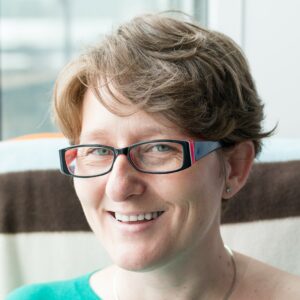
Paula Marginean

Pedro Garcia-Dieguez
eLegislate – the XML ATP chain in the European Parliament – focus on translation
Different directorate generals of the European Parliament (EP) are involved in the production, verification, translation and publication of legislative and other documents. The eLegislate project aims at improving the production of documents, from authoring to publication, by reducing manual operations through automation. It is based on XML4EP, a flavour of AKN4UN. The project includes the interoperability of all relevant IT tools, including from other EU Institutions. Multilingualism is a core value of and a mission for the EP. Therefore, DG Translation plays a significant role in the eLegislate project. Developing and adapting the IT tools and workflows to XML4EP has been a complex and challenging transition for the IT teams, as well as for other support units. DG Translation has opted for a mixed approach – buy, build and customise. It uses Trados Studio, with bespoke and/or customised plugins, and a series of custom-built services and applications, including a computer-assisted translation tool, to ensure the translation of documents included in the eLegislate chain. This presentation gives an overview of the IT landscape put in place to provide the translators and translation assistants in DG TRAD with the necessary tools to work on XML4EP documents, in an efficient and user-friendly way.
Paula Marginean
Paula Marginean has a translator’s degree from the Applied Modern Languages Section of Babeș-Bolyai University, in Romania, where she studied English and French and followed courses for translators specialised in business and international relations. She also holds a Master’s degree in European Legal Studies from the Université de Lorraine and the European Institute of Public Administration. She started working on the translation of the acquis in view of Romania’s accession to the EU in 2002. She joined the European Parliament in 2005, with the pre-accession team, and was a member of the Romanian Translation Unit for 11 years, first as a translator and then as a quality coordinator. In 2017, she became the head of the Euramis-Pre-Translation Unit. In 2019, she moved to the Applications and IT Systems Development Unit, leading the team that ensures the development, maintenance and customisation of the IT tools that support the workflows and translation processes in DG Translation at the European Parliament.
Pedro Garcia-Dieguez
Pedro Garcia-Dieguez has a computer science Master from the University of Deusto (Bilbao, Spain). He started his career as an IT consultant with PwC before moving to the public sector, where he worked in the development of IT applications in the fields of Agriculture and Employment. He passed an EPSO competition and moved to Luxembourg, working as a project manager and head of service in the European Court of Justice and the European Commission. He joined the European Parliament in 2013, and since then he has been working in the development of workflow and translation applications in the Applications and IT Systems Development Unit.
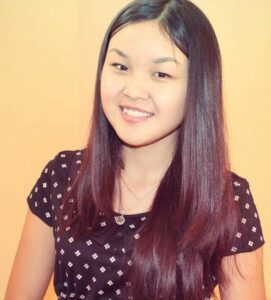
Dinara Akmurzina
Error Analysis for Machine Translated text from English into Kazakh
This presentation and paper analyzes errors produced by a machine translation system when translating unstructured texts (e.g., conversational subtitles for movies and web series) from English into the Kazakh language and categorizes the errors (e.g., types and frequencies). For this paper only, subtitles for 10 episodes of American animated television series were collected from the online database Open Subtitles (www.opensubtitles.org). The English subtitles are translated into Kazakh using Google Translate. In addition, the Kazakh translations of the same 10 episodes are also collected and analyzed for errors to check the quality of fan subtitles published on Open Subtitles. Google Translate output (from English to Kazakh) and Open Subtitles (translated by non-professional translators from English to Kazakh) are compared with the Expert Human Translation. Revealed errors are explained and put into a specific category of error taxonomy. As the result of the research, an original error taxonomy will be created considering the idiosyncrasy of the Kazakh language.
Dinara Akmurzina is a Master student of an Erasmus Master programme in Technology for Translation and Interpreting. She is currently doing her second year at Ghent University. She has overall four years of translation experience. Her research interests are neural machine translation, evaluation of machine translation systems, machine translation engines for low-resource languages, error analysis for machine translation.

Elisa Di Nuovo
Error Analysis of real-time speech machine translation in the context of the European Parliament’s Innovation Partnership
The Speech-To-Text (STT) unit is responsible for the integration of STT technology at the European Parliament. The unit is working on a STT and machine translation (MT) tool that can automatically transcribe and translate parliamentary multilingual debates in real time, covering the 24 official languages of the EU.
The purpose of this development is to increase accessibility for the deaf and hard-of-hearing people, who currently have no access to the plenary debates.
One of the main responsibilities of the STT unit is assessing the linguistic quality of the tool’s output, especially considering the challenges brought from the high degree of multilingualism of parliamentary debates, and the limits of current MT particularly in low-resource languages.
In this talk, the speaker presents the adopted methodology and illustrate the results of a quantitative study performed on a test set containing samples in the 19 languages already deployed in the prototype: Bulgarian, Croatian, Czech, Dutch, English, Finnish, French, German, Greek, Hungarian, Italian, Lithuanian, Polish, Portuguese, Romanian, Slovak, Slovenian, Spanish and Swedish.
Elisa Di Nuovo is an Innovation Language Professional at the Speech-to-Text Unit (Directorate-General for Translation) of the European Parliament. Her background is in Translation Studies and before joining the Parliament, she has been a PhD candidate in Digital Humanities (University of Turin, Italy) with a computational linguistics project devoted to the development and analysis of a parallel Italian learner treebank in Universal Dependencies. Special interests, apart from automatic speech recognition and machine translation, include learner corpus research and sentiment analysis.
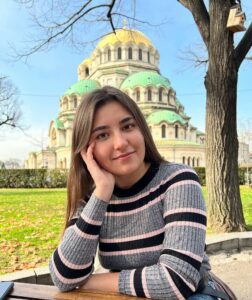
Aida Kostikova
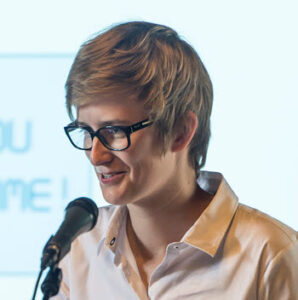
Joke Daems

Todor Lazarov
Evaluation of adaptive machine translation from a gender-neutral language perspective
In this paper, we attempt to analyse the problem of conveying gender-neutral language when working with notional and grammatical languages (English and German) from the point of view of adaptive MT. More specifically, we assess the efficiency of adaptive machine translation when it comes to gender-neutral language use, the purpose of which is to “reduce gender stereotyping, promote social change and contribute to achieving gender equality” by putting the adaptive part of an adaptive MT engine to the test and analyse whether and to which degree it can be retrained “on-the-fly” in attempting to ensure gender-neutrality in translation. It is especially important to analyse this problem from the standpoint of grammatical gender languages which involve much more effort to create a gender-neutral configuration – compared to notional gender languages like English. English-German was chosen as a main working language pair in order to analyse how adaptive model of the engine adjusts the output to complex lexical, grammatical, orthographical and syntactical GNL modifications specific for grammatical gender languages as German.
Aida Kostikova did her BA in Linguistics (Kazan Federal University, Russia), with a focus on Translation Studies, and MA in Languages and Intercultural Communications in Politics and Diplomacy (Lomonosov Moscow State University, Russia). Currently she is a Cohort 3 student on the Erasmus Mundus Master programme ‘Technology in Translation and Interpreting’, and her research interests centre around Machine Translation, Cognitive Linguistics, and Computational Linguistics.
Joke Daems
Joke Daems is assistant professor human-computer interaction in empirical translation & interpreting studies at Ghent University. They conduct research as a member of EQTIS (Empirical and Quantitative Translation and Interpreting Studies) and collaborate closely with the Language and Translation Technology Team (LT³). They obtained a PhD in Translation Studies at Ghent University in 2016, working on identifying the differences between human translation and post-editing for students and professional translators. This work was awarded the CIUTI PhD Award in 2017. Their research interests include (machine) translation, post-editing, translatability, human-computer interaction, and literary translation and style. Future work will focus on the potential of adaptive MT for gender-inclusive language and technology for L2 translation.
Todor Lazarov
Todor Lazarov is a lecturer at New Bulgarian University (NBU) and part of the Computational and Applied Linguistic Research Center at NBU. He holds a PhD degree in Computational linguistics and has academic background in Linguistics. He has also specialized Artificial Intelligence in the University of Amsterdam. Todor has diverse multicultural experience as visiting scholar and lecturer in different EU and USA academic institutions. He has a diverse experience with CAT tools and has also established successful collaboration with different commercial CAT and MT providers. Todor Lazarov has over 8 years of diverse practical business experience as part of different language and translation service providers. He is also providing professional consultation services to different LSP companies in Bulgaria and also mentorship and education to freelance translators about current trends and translation technologies.
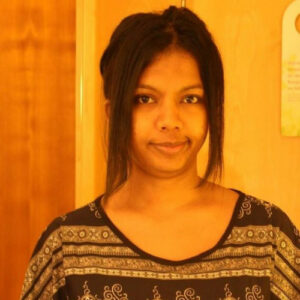
Jeevanthi Uthpala Liyanapathirana
co-author:
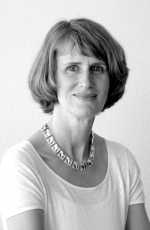
Pierrette Bouillon
Exploring different speech recognizers for post-editing translation outputs: A pilot study in an international organization
Translation services require translating with high accuracy, within a limited time frame. While post-editing machine translation outputs has helped this demand, speech technology is likely to contribute as well. Recent research encourages studies on post-editing using speech as an additional modality, followed by studies on post-editing using speech in international organisations. However, to our knowledge, no study compares how different speech recognition software perform during post-editing and what practical parameters play a key role in integrating speech in translation workflows.
We conducted quantitative and qualitative research with different types of speech recognizers for post-editing in the trade domain, in an international organisation. Four professional translators (EN-FR) translated four comparable texts (avg. length 220 words) of the trade domain each, using four different techniques. One text was post-edited via keyboard typing (PeT), and the remaining three texts were translated using speech via three different speech recognition techniques. Each spoken translation was then followed by post-editing. This study shows that scenario dependent mix of speaking and typing modalities can improve translation productivity in a professional translation environment. By incorporating professional translators in an international organisation, we received important input that should be considered when integrating speech technologies in professional translators’ workplaces successfully.
Jeevanthi Liyanapathirana
Jeevanthi Liyanapathirana is a PhD student at the Faculty of Translation and Interpreting, University of Geneva, where her research question lies on incorporating speech technologies for translation and post editing purposes. She has been a fellow in translation technology as well as a translation technologist in the World Intellectual Property Organization, Geneva and is currently working as a Document and Translation Technologies Specialist at World Trade Organization, Geneva, Switzerland. She holds a Masters of Philosophy in Computational Linguistics from the University of Cambridge, UK (MPhil in Computer Speech, Text and Internet Technology) and a Bachelor of Science (Computer Science Special Degree) from the University of Colombo, Sri Lanka. She has participated in multiple EU projects, Swiss National Science Foundation projects as well as South Asian Localization projects involving machine translation, speech recognition and Computational Linguistics in general. She has worked as a research intern in machine translation at Idiap Research Institute, Switzerland as well as at Language Technology Research Laboratory at University of Colombo where she worked as research assistant in Computational Linguistics. Currently, she is also a member of the Bibliomics and Text Mining Group at the University of Applied Sciences, Geneva.
Pierrette Bouillon
Pierrette Bouillon has been Professor at the Faculty of Translation and Interpreting(FTI), University of Geneva since 2007. She is currently Director of the Department of Translation Technology (referred to by its French acronym TIM) and Dean of the FTI. She has numerous publications in computational linguistics and natural language processing, particularly within speech-to-speech machine translation, accessibility and pre-editing/post-editing.
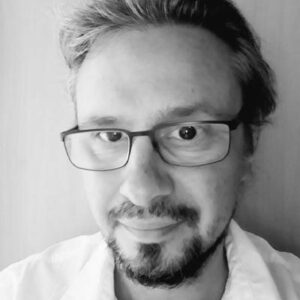
Michal Měchura
Fairslator: Machine translation bias removal tool
This demo will introduce Fairslator, an experimental application for removing bias from machine translation. Translations produced by machines – especially when the source language is English – are often biased because of ambiguities in gender, number and forms of address. Fairslator resolves these by examining the output of machine translation, detecting the presence of any bias-triggering ambiguities, and asking the human user how they wish to resolve them: for example, whether gender-ambiguous English words such as ‘student’ and ‘doctor’ should be translated as male or female, or whether the English pronoun ‘you’ should be translated as singular or plural, as formal or informal.
Michal Měchura
Michal is a freelance language technology consultant. He is the author of the open-source dictionary writing system Lexonomy and the open-source terminology management platform Terminologue. He is also the technical architect behind many Irish-language reference websites such as the National Terminology Database for Irish (téarma.ie), the Placenames Database of Ireland (logainm.ie) and the Dictionary and Language Library (teanglann.ie). Michal has previously worked for Dublin City University, for Foras na Gaeilge in Dublin, and for Microsoft Ireland. He is currently based in Brno, Czech Republic
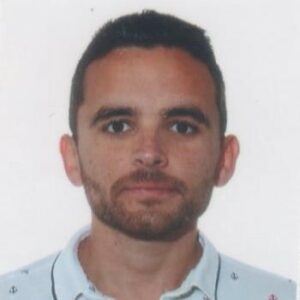
Carlos Manuel Hidalgo Ternero
Co-Author

Xiaoqing Zhou Lian
gApp: a text preprocessing system to improve the neural machine translation of discontinuous multiword expressions
| In this short talk we will present gApp, a text-preprocessing system designed for automatically detecting and converting discontinuous multiword expressions (MWEs) into their continuous forms so as to improve the performance of current neural machine translation systems (NMT) (see Hidalgo-Ternero, 2021, & Hidalgo-Ternero & Corpas Pastor, 2020, 2022a, 2022b & 2022c, among others). To test its effectiveness, several experiments with different NMT systems (DeepL, Google Translate and ModernMT, inter alia) and in different language directionalities (ES/FR/IT>EN/DE/ES/FR/IT/PT/ZH) have been carried out in order to verify to what extent gApp can enhance the performance of NMT systems under the challenge of phraseological discontinuity. |
Carlos Manuel Hidalgo Ternero holds a PhD in Linguistics, Literature and Translation with International Mention from the University of Malaga, with a grade of Outstanding Cum Laude. He also holds a Master’s Degree in Teaching Spanish as a Foreign Language and Other Modern Languages from the University of Seville, as well as a Master’s Degree in Teaching Secondary Education, Vocational Training and Language Teaching, from the University of Malaga.
As a researcher, he is the author of more than 15 scientific contributions published in English and Spanish in both national (MONTI Monografías de Traducción e Interpretación or CLINA Revista Interdisciplinaria de Traducción, Interpretación y Comunicación Intercultural) and foreign journals (Yearbook of Phraseology or Études Romanes de Brno), as well as in the form of book chapters in collective works published by SPI first quartile publishers such as Peter Lang, Springer, John Benjamins Publishing Company or Comares, among others. He is also an organising member of the International Conference ‘Computational and Corpus-based Phraseology’ (EUROPHRAS 2019 and EUROPHRAS 2022, where he has presented two papers in each).
His two main lines of research are corpus linguistics and computational phraseology applied to translation in which, more specifically, he has specialised in the preprocessing of multiword expressions to improve neural machine translation systems. As a result of this research, he designed the gApp system, registered by the University of Malaga (intellectual property registration) in Safe Creative (information available at the following link https://www.safecreative.org/work/2011165898461-gapp).
Xiaoqing Zhou-Lian
PhD in Spanish Language and Literature from the Complutense University of Madrid. Master in Spanish Philology from Shanghai International Studies University. Chinese teacher at the Universidad Rey Juan Carlos (URJC). Teacher in the Official Master of Legal Translation and Interpreting (URJC). She developed her work as teacher in the Complutense University of Madrid, the Pontifical University of Comillas in Madrid, Jesús Maestro Official Language School and the Alfonso X el sabio University. Translator of the first zarzuela translated into Chinese LA ROSA DEL AZAFRÁN. Interpreter of Spanish-Chinese and Chinese-Spanish at numerous events, such as for the Uruguayan President, the winner of the Nobel Prize for Literature MOYAN, etc. Editor and presenter of the programme “CON TODOS LOS ACENTOS” on TVE 2 in 2007 and 2009.

Luisa Bentivogli
KEYNOTE ADDRESS
Good but not always fair:
tackling gender bias in automatic translation
Along with the massive deployment of language technologies, concerns regarding their societal impact have been raised, and glaring evidence of biased behaviors has been reported. Translation technologies are no exception. Although their overall quality has reached unprecedented levels, automatic translation systems have been shown to exhibit gender bias, by over-representing masculine forms and mirroring traditional gender roles and stereotypes. To frame the problem, I will define the concept of gender bias in automatic translation and discuss the different factors that can contribute to its emergence and the harms it can cause. Then, focusing on speech translation, I will present a multifaceted comparative evaluation aimed to assess the extent to which different systems translating into different languages show a biased behaviour. I will conclude by discussing new research directions aimed at the creation of new, gender-inclusive translation technologies.
Luisa Bentivogli
Luisa Bentivogli is Senior Researcher in the Machine Translation Group at Fondazione Bruno Kessler (FBK). Her research interests include the study of gender bias in automatic translation, evaluation of human language technologies, translation technologies for translators, creation and annotation of multilingual corpora, crowdsourcing for natural language processing, computational lexicography in a multilingual environment, and contrastive linguistics. She contributed to several international and national projects, including MateCat, ModernMT and MateSub, which led to commercial products targeted to professional translators and translation companies. She is co-author of more than 80 scientific publications and she is regularly involved in the organization of international events related to machine translation, addressed to both the scientific community and the translators, such as the School of Advanced Technologies for Translators (SATT 2016-2019). She recently received an Amazon Research Award for the project “Bias Mitigation and Gender Neutralization Techniques for Automatic Translation”.

Joanna Gough
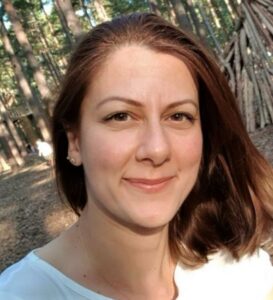
Özlem Temizöz
How Collaborative is Concurrent Translation? Insights From a Survey of 804 Translators
The rapid development of new technologies for collaborative translation has led to fundamental shifts in the working methodologies for translators. And yet, the ‘collaborative’ nature of these tools has not been examined or questioned so far. The term ‘collaborative’ seems to be generally accepted only to describe the new workflows and the tools that enable horizontal and vertical collaboration (CSA 2020: 7) but little is known about how well these tools support collaboration in terms of communication, coordination and cooperation, the building blocks of a collaborative environment (Fuks et al. 2008). This paper reports on a survey study investigating a form of collaborative translation, concurrent translation (CT), where translators and other agents work on the same text simultaneously using horizontal and vertical collaboration. Selected findings from the survey of 804 translators working with 51 collaborative technologies suggest that, from the perspective of translators, the collaborative translation tools currently on the market need improvement to better support the CT workflows. We highlight the issues reported by the participants and present several improvements suggested by them, which could potentially make the CT workflow more effective by improving user experience, leading to more collaborative experiences, and, eventually, to higher-quality outputs.
Joanna Gough, Centre for Translation Studies, School of Literature and Languages, University of
Surrey, UK
Dr Joanna Gough is a lecturer in Translation Studies at the University of Surrey, UK. Joanna’s research interests encompass a variety of language and technology related subjects, such as innovative workflows, tools and resources for translators, process-oriented translation research or translation
competence. Joanna is also interested in the business and industry aspects of translation and is a keen advocate of cooperation between academia and industry.
Özlem Temizöz, Centre for Translation Studies, School of Literature and Languages, University
of Surrey, UK
Dr Özlem Temizöz is a postdoctoral researcher at CTS, the University of Surrey, UK. Özlem’s research interests revolve around language technologies and their impact on the translation process, product and translator. Having worked on projects exploring directionality in the translation process and
investigating postediting workflows, she is currently working on research projects investigating
multilingual communication in healthcare settings and concurrent translation with collaborative
translation technologies
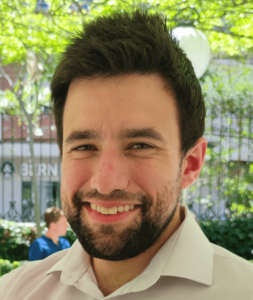
Juan Carlos Gil-Berrozpe
HypoLexicon – A Terminological Resource for Describing Hyponymic Information
Terminology has evolved from static and prescriptive theories to dynamic and cognitive approaches. Thanks to these modern approaches, there have been significant advances in the design and elaboration of terminological resources, resulting in the creation of tools such as terminological knowledge bases (TKBs). For instance, they can show how concepts are interrelated through different semantic relations. Of these relations, hyponymy is the most relevant to terminology work because it deals with concept categorization and term hierarchies. In this line, this paper presents a new enhancement related to hyponymy for EcoLexicon, a TKB on environmental science. It is known as HypoLexicon and it is a stand-alone module for EcoLexicon in the shape of a terminological resource designed to describe hyponymic information of environmental concepts. It includes definitional, relational, ontological and contextual information about specialized hypernyms and hyponyms. The materials and methods used for the creation of HypoLexicon are described, involving the EcoLexicon English Corpus, Sketch Engine, and Lexonomy. Finally, the use and features of HypoLexicon are shown by analyzing three terminological entries of Geology concepts (earthquake, sediment, and soil), whilst also explaining all the hyponymic elements displayed using its characteristic hierarchical structure.
Juan Carlos Gil-Berrozpe
Juan Carlos Gil-Berrozpe is a Language Technology Specialist at the Translation Centre for the Bodies of the European Union, where he works as a member of the Computer-Assisted Translation (CAT) Team of the Translation Support Department. He holds a Degree in Translation and Interpreting, a Master’s Degree in Professional Translation with Translation Technologies, and he is also finishing a PhD in Terminology and Cognitive Linguistics at the University of Granada (UGR). His past experience includes working as a lecturer and researcher at the Department of Translation and Interpreting of the UGR, as a terminology fellow for the World Intellectual Property Organization (WIPO), and as a scientific-technical translator and game localizer. He belongs to the LexiCon Research Group, focused on studying theoretical and practical premises of Terminology, Cognitive Linguistics, Specialized Translation, and Knowledge Representation.
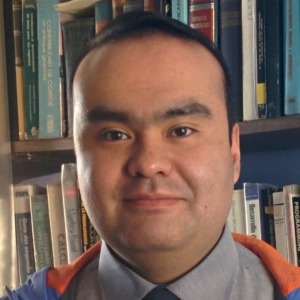
Miguel Angel Rios Gaona

Raluca-Maria Chereji
co-authors:
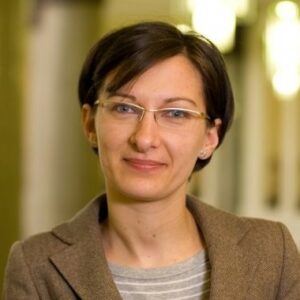
Alina Secară
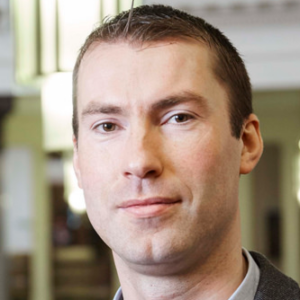
Dragoș Ciobanu
Impact of Domain-Adapted Multilingual Neural Machine Translation in the Medical Domain
Multilingual Neural Machine Translation (MNMT) models leverage many language pairs during training to improve translation quality for low-resource languages by transferring knowledge from high-resource languages. We study the quality of a domain-adapted MNMT model in the medical domain for English-Romanian with automatic metrics, and a human error typology annotation with terminology-specific error categories. We compare the out-of-domain MNMT with the in-domain adapted MNMT. The in-domain MNMT model outperforms the out-of-domain MNMT on the majority of automatic metrics and produces fewer terminology errors.
Miguel Angel Rios Gaona
Miguel Rios is a Postdoc in Machine Translation at the University of Vienna Centre for Translation Studies. He holds a PhD in Computational Linguistics from the University of Wolverhampton. He is developing models for text representation, and Machine Translation. In particular, he is interested in deep generative models for Neural Machine Translation.
Raluca-Maria Chereji
Raluca-Maria Chereji is a doctoral candidate and HAITrans graduate research assistant within the Centre for Translation Studies at the University of Vienna. She holds an MSc in Specialised Translation (Scientific, Technical and Medical) from University College London. Prior to her role, Raluca worked for several years in the translation industry, as both a Project Manager and freelance medical translator. Her research interests include the effects of automatic speech recognition on the translation of patient-facing medical texts, translator workflow practices, as well as narrative medicine.
Alina Secară
Dr Alina Secară is Senior Scientist in the University of Vienna Centre for Translation Studies, where she investigates accessibility practices and technologies, and teaches subtitling, captioning and multimedia localization processes and technologies. She is also a freelance UK Stagetext accredited theatre captioner, and worked with theatres across the UK to create captions for the deaf and hard-of-hearing. She co-managed the University of Leeds contribution to the EU-funded DigiLing Project (2016–2019) to create multilingual, multimedia e-learning resources for digital linguists.
Dragoș Ciobanu
Dragoș Ciobanu is Professor of Computational Terminology and Machine Translation in the University of Vienna Centre for Translation Studies. He leads the HAITrans research group (Human and Artificial Intelligence in Translation) and investigates ways to improve localization workflows by integrating translation and speech technologies, as well as methods to optimise collaborative translation and training practices. He collaborates with Language Service Providers from around the world and trains linguists from International Organisations to maximize the use of language and project management technologies.
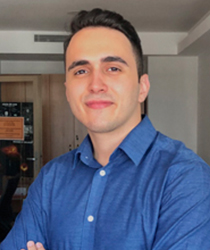
Cihan Ünlü
co-author:
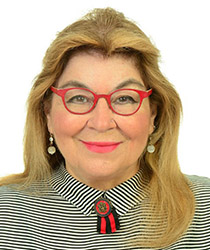
Aymil Doğan
Investigating the use of speech technologies in consecutive interpreting: A pilot study on ASR-enhanced CAI tool prototype ‘Sight-Terp’
Automatic speech recognition (ASR) technologies have improved considerably with new computational developments and have been garnering greater attention in technology-mediated interpreting research. Several computer-aided interpreting tools (CAI) have been developed, using enhanced ASR in automatic entity highlighting, automated query systems (live support as an artificial boothmate), and information retrieval which are generally aimed at improving rendition quality and lesser cognitive load. The empirical data drawn from recent CAI research conducted for simultaneous interpreting show a measurable precision in rendering quality. Given the necessity to enrich empirical research on CAI tools, unlike the previous studies mostly investigating the use of ASR in simultaneous interpreting, this study scrutinizes the use of ASR in the consecutive mode by proposing a prototype CAI tool. By this means, we introduce Sight-Terp, a CAI tool using enhanced ASR, Machine Translation (MT) and Named Entity Recognition (NER), and digital notepad functions together. As a part of an ongoing thesis, this study also aims to find if there is a significant difference between consecutive interpreting performances of a group of participants in a repeated measures design. (revised Abstract text, as of 30 September 2022)
Cihan Ünlü
Cihan Ünlü is conference interpreter and researcher working at İstanbul Yeni Yüzyıl University, Turkey. His research areas are computer-aided translation and interpreting studies, and speech technologies. He is pursuing his MA in translation and interpreting studies at Hacettepe University, Ankara.
Aymil Doğan
Aymil Doğan is professor of Translation and Interpreting Studies at Hacettepe University, Ankara. Her fields of study are community interpreting, discourse analysis, interpreter training.

Mauro Bubnic
co-author:

Daniel Marín Buj
Machine Translation Quality Monitoring at the Translation Centre for the Bodies of the European Union
The Translation Centre has introduced full post-editing and light post-editing of machine translation output. To assess different quality aspects of both modes of production on a language by language basis, the Centre avails itself of monthly reports and an interactive dashboard. The reporting shows the effort averages in a given period, including: effort per language, effort per language and workflow stage, post-editing correction per language, effort by editing interval per service, effort by domain, correlation between BLEU and similarity, and engine performance trends. On the whole, MT quality seems fit for post-editing and BLEU and similarity scores correlate well. However, full post-editing is domain bound and the selection of engines is not based on actual “document types”. Statically using predetermined in-domain engines for all documents coming from clients that have engines in their domains is not always appropriate. Therefore, the Translation Centre is implementing a multi engine strategy combined with an automatic quality scoring system. Documents to be translated will be sent to different MT systems and the different outputs will be automatically ranked, prioritising the best segment in the MT document assigned to post-editors. This should mitigate the lack of correlation between the client and the document domains.
Mauro Bubnic
Mauro Bubnic is the head of the Translation Support Department at the Translation Centre for the Bodies of the European Union. With a degree in conference interpreting, he worked at the Publications Office, the European Parliament and the Court of Auditors of the EU before joining the Translation Centre in 1998. The Translation Support Department is in charge of the linguistic services workflow, the development of new linguistic services and the management of the IATE database.
Daniel Marín Buj
Daniel Marín Buj coordinates the activities of the MT team in the Translation Support Department at the Translation Centre for the Bodies of the European Union in Luxembourg, and has also worked in the localisation industry and as a translation technologist. He has university degrees in linguistics, NLP and AI, with a focus on translation quality. Currently, he is actively involved in projects relating to domain adaptation, translation quality estimation and text summarisation.
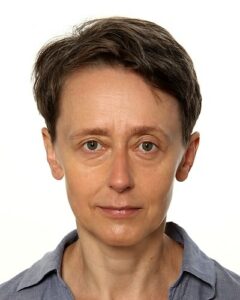
Anna Setkowicz-Ryszka
Peculiarities of Polish academic legal writing in English translation: field experts vs. algorithms
This presentation compares revising translations by persons writing in English as a Lingua Franca (ELF) with post-editing of machine translation (PEMT) of academic legal texts. In case of academic legal writing, the well-known problems with equivalence of legal terms resulting from differences between legal systems, as well as complex syntax and linguistic particularities make both ELF revision and PEMT rather demanding. ELF is considered a fully-functional language, enabling successful spoken communication, but due to L1 influence it is known to pose greater demands on language mediators’ processing than texts by native speakers. In case of revisers, the task may be made easier by L1 source text and shared language benefit. In PEMT, another cognitively demanding activity, certain categories of MT errors have been defined. Different error categories require different cognitive effort to detect and fix: greater effort is needed in case of adequacy errors than acceptability errors (not all acceptable translations are adequate). Examples are provided of renderings of lexical items typical of academic legal language in DeepL and eTranslation output and ELF texts, and correct translations suggested. Both EFL revision and PEMT are challenging. Maintaining target language conventions in academic legal texts can prove very research-intense.
Anna Setkowicz-Ryszka, Doctoral School of Humanities, University of Lodz, Poland
Translator with 25 years’ experience, specializing in legal, financial and academic texts, sworn translator of English in Poland, legal translation trainer. Long-standing cooperation, including also revision and post-editing, with legal publishing houses and law firms. Doctoral student at the Doctoral School of Humanities, University of Lodz, Poland. Research interests: legal translation pedagogy; contract translation with special emphasis on boilerplate clauses; academic legal writing; plain legal language; machine translation post-editing in the field of law; translation process research; translator expertise.
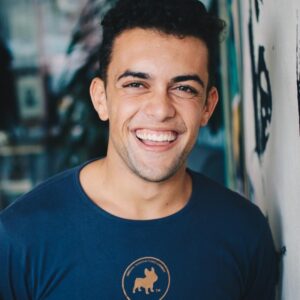
Vicent Briva-Iglesias
co-authors:
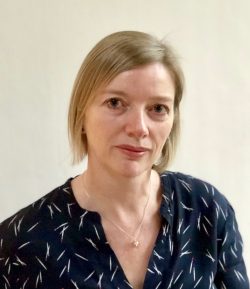
Sharon O’Brien

Benjamin R. Cowan
Pre-task perceptions and their impact on final translation quality: implications for training
MT has become an undisputed element of today’s workflows in the industry. However, this adoption of MT is not always accompanied by positive feedback, as some translators have shown little satisfaction in working with MT through post-editing workflows. This research aims to study the current translator-computer interaction from a novel angle. In cognitive science, studies show that past experiences and perceptions are a determinant for future beliefs, attitudes and behaviours. Thus, if translators are not happy with their past interactions with MT, and before starting a post-editing assignment they have a negative opinion about that future interaction (pre-task perceptions), what will the consequences be for the translation? We recruited 15 professional translators and carried out a pre-task questionnaire to quantify their past experiences on MTPE. This was followed by the translation of a text, and a professional reviewer assessed the quality of the translations. Results suggest that there is a positive relationship between past experiences and the quality the translations, and that translators’ predisposition or attitude before undertaking a task affects the final translation quality. Thus, we propose a series of changes in translator training to reduce these negative pre-task perceptions, which would ultimately lead to better final translation quality.
Vicent Briva-Iglesias
Vicent Briva-Iglesias is a PhD researcher funded by D-REAL and based at Dublin City University, Ireland, working on interactive machine translation and human-computer interaction. He holds a BA in Translation and Interpreting from Universitat Jaume I, as well as a MSc in Translation Technologies from Universitat Autònoma de Barcelona. He combines his practice of research in translation technologies with the language services industry, where he also works as an English, Catalan, and Spanish certified sworn translator, specializing in the legal, financial and software domains. Vicent also lectures the module Introduction to Python for linguists at the Official Masters in Translation Technologies at Universitat Oberta de Catalunya.
Sharon O’Brien
Sharon O’Brien is Professor of Translation Studies at the School of Applied Language and In-tercultural Studies. She obtained a PhD in 2006 on the topic of Controlled Language and Post-Editing Effort (Irish Research Council Scholarship). Prior to this, she was awarded an MA by research on Language for Special Purposes, Text Linguistics and Machine Translation (1993 – EU-funded) and a BA (hons) in Applied Languages (Translation, French and German). Between 1995 – 1999 she was a Language Technology Consultant in the Localisation Industry. She has coordinated a H2020 EU-funded RISE project called INTERACT – The International Network in Crisis Translation. She has been a funded investigator (Science Foundation Ireland) in the ADAPT research centre for over 10 years, where her focus has been on human factors and translation technology. Her teaching focuses on language technologies, research methods and translation.
Benjamin Cowan
Benjamin R Cowan is Assistant Professor at UCD’s School of Information & Communication Studies. He completed his undergraduate studies in Psychology & Business Studies (2006) as well as his PhD in Usability Engineering (2011) at the University of Edinburgh. His research lies at the juncture between psychology, human-computer interaction and communication systems in investigating how design impacts aspects of user behaviour in social, collaborative and communicative technology interactions. His recent research has focused specifically on how theory and quantitative methods from psychological science can be applied to understand and design speech and language technologies, as well as how we can design for habit change across of number of domains and contexts. Dr Cowan is the co-founder and co-director of the HCI@UCD group, one of the largest HCI groups in Ireland and is a funded investigator in the SFI funded ADAPT Centre.

Emmanuelle Esperança-Rodier
co-authors:
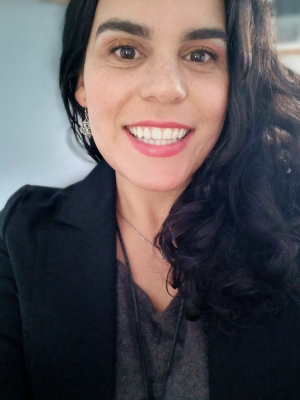
Fiorella Albasini

Yacine Haddad
A Study on the worthiness of MWEs manually-annotated corpora to train Neural Netwoks to detect MWEs
MultiWord Expressions (MWE) are idiosyncratic expressions made of recurrent word combinations where the general meaning cannot be understood from the literal meaning of each constituent (Firth 1957 and Sag et al. 2002). Their identification is a demanding task in natural language processing (NLP) (Sag et al., 2002; Baldwin and Kim, 2010; Bouamor, 2014). To figure out if the MWE manually annotated corpora could be used to train Neural Networks to automatically detect MWE, we set up an experiment to annotate with MWE a French corpus, paraSHS-Témoigner (Kraif, 2018), of 1 838 sentences and 57 162 words, using Tutin (2015) typology, by three annotators on the Online Collaborative Annotation Platform ACCOLÉ (Esperança-Rodier and Brunet-Manquat, 2019). A total of 3 356 MWEs were annotated. We used the SemEval’13 metric adapted to MWE annotation to demonstrate the worthiness of manually annotated corpora. First results on two annotators showed a high agreement with an F1-score at 0.71 on Strict cases (MWE delimitation and labelling), rising to 0.86 on Partial cases (overlap on the MWE delimitation) and 0.86, also, for Type labelling, not considering the MWE delimitation. This encourages the creation of MWE manually annotated corpora to train Neural Networks for MWE automatic detection.
Emmanuelle Esperança-Rodier
After studying technical writing and translation, Emmanuelle Esperança-Rodier graduated with a PhD in computational linguistics on the quality of writing in Simplified English (AECMA). Having worked as a project manager and translator in a translation agency for several years, she joined the Grenoble Alps University, Grenoble Computer Science Laboratory (LIG) where she is studying Skill-Based and Task-Focused Machine Translation Evaluation.
In her spare time, if any, she enjoys reading, yoga, crafts, music and long walks with her dog and her family.
Fiorella Albasini
Born in a bilingual and bicultural family in Chile, Fiorella Albasini has always been passionate about languages. She is a translator and a linguist specialized in NLP. Some of her interests are traveling, crafts and birdwatching.
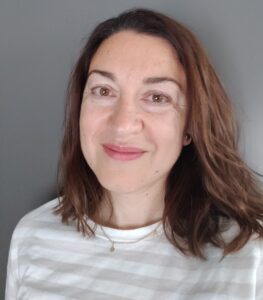
Lucía Guerrero
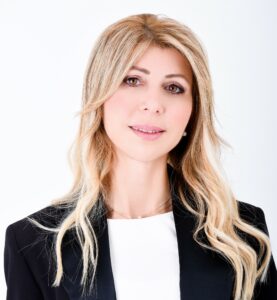
Viveta Gene
A Study Towards a Standardized Typology of Machine Translation Post-Editing Guidelines: A Suggested Template for Language Professionals
It is commonly agreed that Machine Translation Post-Editing (MTPE) guidelines are key for a successful outcome in MTPE tasks. However, the current lack of an international standard or recommendations on the scope and technique for drafting such guidelines risks creating confusion amongst the potential writers -mainly Project Managers (PMs)- and the potential users -mainly Post-Editors (PEs). This paper is based on the determinate findings of the first-round workshop offered on this topic by the authors at TC43 Asling (Gene & Guerrero, 2021) and reports on a second-round extensive qualitative study that investigates how professional users and writers of MTPE guidelines expect them to be drafted in terms of content, length, and format, amongst other aspects. The analysis of the data and the corresponding findings lead to the suggestion of a template and a questionnaire for guidance on the scope and technique for drafting MTPE guidelines, to cover the existing training gap for the Language Professionals (LPs) and assist Language Service Providers (LSPs) and Clients who apply MTPE workflows.
Lucía Guerrero is Machine Translation Manager at Expedia Group and affiliated teacher at the Universitat Oberta de Catalunya. She holds a degree in Translation and Interpreting as well as in Humanities. With more than 20 years’ experience in the localization industry, she has previously worked as translator, Project Manager and MT Specialist at several LSPs, and she is currently leading the MT strategy at Expedia Group. Her tasks include training and evaluating MT systems, finding new opportunities for the use of MT, designing MTPE workflows and training linguists. She is member of the GALA MTPE Training Initiative Steering Committee.
Viveta Gene is a passionate and driven executive armed with 20+ years of experience in the translation and localization industry, having the title of the CEO at GTH Translation. She has a 360-degree view of the Translation and Localization Workflow thanks to her previous experience as a Language Solutions Specialist, Business Developer, Vendor Manager, Project Manager and Linguist. Her focus is to promote new trends in the industry, where translation skills meet MT technology and Localization Engineering. Machine translation engines, automated translation and post editing of machine translated output are amongst her fields of interest and the topic of her PhD Research.

Roser Sánchez-Castany
co-authors:

Silvia Rodríguez Vázquez

Marianne Starlander
Towards a technologised translation classroom – Practices and perceptions from trainers at a Swiss University
Nowadays, the translation market seeks profiles with increasing levels of technical skills that go beyond classical translation competencies. Over the years, university translation programs have tried to adapt their modules to this ever-evolving reality, with more or less success. In this paper, we present a study whose main goal was to obtain a holistic description of how technologies are used in translation classrooms at the Faculty of Translation and Interpreting (FTI) of the University of Geneva, Switzerland. We conducted a series of semi-structured interviews with 16 translation trainers. Preliminary results indicate that the integration of technology in practical translation modules varies considerably depending on the program in which the modules are taught (BA or MA), as well as on the trainer’s educational and professional background. In addition, data show that the type of technology most trainers often referred to (and were more concerned about) was Machine Translation (MT). Trainers’ attitude towards translation technologies was found to be generally positive, particularly in the case of trainers who also have professional translation jobs alongside their academic commitments. Paradoxically, this does not seem to be always reflected in their teaching methods, which tend to be more conservative – with few exceptions.
Roser Sánchez-Castany is Associate Professor of Translation Technologies at the Department of Translation and Communication of Universitat Jaume I, and Associate Professor of Professional Competencies at Universitat Oberta de Catalunya. She is an active member of the research group GENTT (Textual Genres for Translation). Roser’s main research areas include technologies applied to translation, machine translation, and medico-legal textual genres. In addition, she has worked as a freelance translator, localiser and post-editor since 2012.
Silvia Rodríguez Vázquez is Research and Teaching Fellow at the Department of Translation Technology of the Faculty of Translation and Interpreting, University of Geneva. Silvia’s research interests include web accessibility, localisation, universal design and usability, as well as the accessibility of translation technologies. A member of the Cod.eX Research Group from its inception, she has been recently involved in the development of a Swiss Centre for Barrier-Free Communication, a research project funded by federal contributions.
Marianne Starlander is lecturer at the Faculty of Translation and Interpreting of the University of Geneva. She joined the Department of Translation Technology (referred to by its French acronym TIM) in 2000 where she worked as a teaching and research assistant and now as teaching staff. She originally trained as a translator at the same faculty and also holds a postgraduate degree in European studies from the European Institute of the University of Geneva (2000). In 2016, she defended her PhD thesis on the evaluation of Spoken Language Translation (SLT). She has been involved in the research project “Medical spoken language translator” since its start in October 2003, but also in CAT tool training at the MA level and continuing education. She also works as a CAT tool specialist in collaboration with SuisseTra (Swiss association for the promotion of translation technology).

Matthias Heyn
Transformation to the Cloud as a Service Vendor: Lessons Learned
As a global business, world events including pandemics and geopolitical instability have caused an unprecedented shift to our ways of working. A remote workforce was only the start of the changes, as Cloud technology moved from the backbone to the forefront of our daily work.
Cloud technology evolved faster than anticipated for seamless interaction with desktop applications. Contracts had to be revisited for highly secure customers requiring on-premise vendors. Our organizational structure and internal processes were updated accordingly, bringing new ways of working and additional challenges around change management. Interactions and communications from localization buyers through the full supply chain were managed and tracked.
A change of this magnitude encounters many hurdles and as we emerge into the new normal, analysis of the problems encountered and their resolution leaves us with a set of lessons learned to be applied for future changes.
Matthias Heyn
Matthias Heyn has been a pioneer of Trados translation technologies since 1992 focusing on multilingual processes and related technologies in a wide range of industries. Working across product engineering and business development positions from start-up to large scale organizations, he has focused on public-sector organizations in the EU and big pharma in multilingual regulatory processes. With a long-standing interest in Cloud facilitated SaaS delivery models, he has been involved with Trados Cloud since 2020.
Biography
- A. Information Science, Computational Linguistics, Univ. Stuttgart, 1991
- Publishing in Lexicology, Terminology, Corpus Research
- Software Engineer, Trados GmbH – 1992 – 1997
- Engineering Areas: Translation Memory, Sentence Alignment, Terminology and Terminology Recognition
- Founding Trados Benelux A., Belgium, Managing Director 1995
- Business Development for Public Sector Organizations and EU
- Founding Trados Japan KK – 1997-1999, Vice President Asia Pacific / Director TRADOS Japan Corporation 1998
- Business development and language technology strategy for Asian Markets
- VP Internet Business Unit, Trados US, Seattle – 1999-2001
- Development Focus on Translation Management in der Cloud
- VP Sales & Marketing Europe, Trados Stuttgart, 2002-2003
- VP Business Consulting, Trados Belgium, until 2003
- Focus on Regulatory Pharmaceutical Processes, Labeling, Authorization Procedures relating to language technologies
- VP Language Solutions, SDL 2005
- VP Language Technologies – Technology Product Manager, RWS until today (2021)
- European Institutions and European Agencies and related international government organizations in the EU
- Trados Cloud technology focus
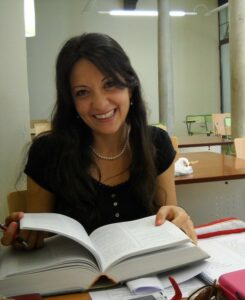
Amal Haddad Haddad
The use of CAT tools and corpus analysis in comparative literary translation research: an English-Arabic case study
Omission is one of the common techniques used in translation. It is considered as a solution in cases of non-equivalence or implicit conveyance of meaning and a parameter to detect manipulation and censorship in other cases. In the field of translation studies, many researchers compare original work with its translation by reading and manually annotating the original work and its translation and/or translations. This task is time consuming, labour-intensive and on many occasions could lead to the loss of relevant information due to inaccuracy mainly in long and voluminous texts, such as literary texts. In this paper, we propose an automatic approach to detecting omissions in literary translated works with the help of the Computer-Assisted Translation Tool (CAT), SDL Trados Studio 2021. The proposed methodology is implemented with the help of the “Alignment” tool offered by Trados Studio 2021, as well as the “Split segment” option, and the “Select the alignment status, quality or connection type to go to” option available in the program. As part of a case study, the proposed methodology was applied to detect omissions in the translations of the epistolary novel Daddy-Long-Legs written originally by Jean Webster in 1912 and compared to its translations into Arabic.
Amal Haddad Haddad is a Graduate Teaching and Research Assistant at the Department of Translation and Interpretation of University of Granada (Spain). She is a member in LexiCon research group. Her research focuses on Terminology, Translation and Interpreting, and Corpus Linguistics. She has different publication in national and international journals and publishers

Raluca-Maria Chereji

Claudia Wiesinger
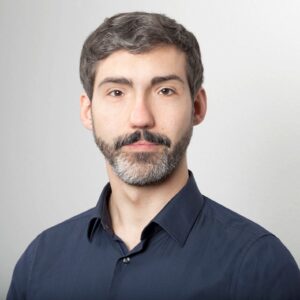
Justus Brockmann
co-authors:

Alina Secară

Dragoș Ciobanu
The use of speech technologies in translation, revision, and post-editing machine translation (PEMT)
… to follow
Raluca-Maria Chereji
Raluca Chereji, is a doctoral candidate and graduate research assistant within the Human and Artificial Intelligence in Translation (HAITrans) research group at the Centre for Translation Studies (ZTW), University of Vienna. Raluca holds an MSc in Specialised Translation (Scientific, Technical and Medical) from University College London, and a BA in French and Politics from Queen Mary, University of London. Her research interests include the effects of speech technologies such as automatic speech recognition (ASR) on the translation of patient‑facing medical texts, translation workflow practices, as well as narrative medicine. For her doctoral project, Raluca is investigating the use of ASR and Machine Translation Post-Editing in translations for the medical domain, and specifically for informed consent forms, as representing an expert-to-lay communication scenario. In collaboration with HAITrans team members, Raluca has been working on a project investigating the impact of medical domain adaptation of Neural Machine Translation models for English into Romanian, and ACCESSOR, a project assessing lexical complexity, structural organisation, and potential gender bias in representations of personal characteristics in Audio Descriptions for theatre.
Raluca has also been accepted onto the reVALORISE+ Erasmus Researcher Training Programme supporting young researchers in developing their doctoral projects into initiatives with tangible societal impact. In addition to her research work, Raluca has been involved in organising the ZTW Language Industry Talks, a series of career presentations by translation industry experts and stakeholders aimed at current BA and MA students. In parallel, Raluca is an active member of Women in Localization as the organisation’s Recruitment Volunteer within the Operations and Metrics Program.
Prior to her current role, Raluca worked for several years in the translation industry, which strongly influenced her research interests. She worked as Project Manager for Dora Wirth (Languages) Ltd., a life science language service provider, and later as a freelance medical translator specialising in medical and pharmaceutical translations, with a focus on clinical research and pharmacovigilance, and regulatory affairs within the European Union.
e-mail: raluca-maria.chereji@univie.ac.at | Website: https://tinyurl.com/3h46mvjt
Claudia Wiesinger
Claudia Wiesinger holds an MA in Literary and Cultural Studies from the University of Salzburg and an MA in Applied Translation Studies from the University of Leeds and is currently working as a graduate research assistant at the University of Vienna Centre for Translation Studies (ZTW), a position which involves research and teaching. She has also been a doctoral candidate at the University of Vienna since February 2021. In her doctoral project, Claudia is investigating the applications of speech-enabled post-editing machine translation (PEMT), i.e., the integration of automatic speech synthesis into PEMT, in crisis translation with the aim of facilitating the work of professional and non-professional translators. In addition to crisis communication and the role of translation, Claudia’s research interests include the effects of speech tools on translation, revision and PEMT tasks, and computer-assisted translation and revision practices.
As part of her role in the Human and Artificial Intelligence in Translation (HAITrans) research group, Claudia has been involved in organising the ZTW Language Industry talks, a series of talks which aims to bridge the gap between academia and the translation industry by offering industry professionals a platform to talk about their perspectives on the industry, the impact of technology, as well as the skills needed to succeed as a (freelance) translator, reviser, and project manager. Enabling closer collaboration between academia and the industry is one of Claudia’s priorities, which is also reflected in her successful video application for the GALA Rising Star Scholarship 2022 (Faculty edition), in which she introduces her ideas for a more collaborative and practice-based approach to teaching PEMT.
Aside from working in academia, Claudia is also an active member of the translation industry. Having initially worked as a German in-house translator and reviser at ICS-translate in the United Kingdom, Claudia is now a freelance translator who specialises in the translation of websites, marketing texts and product descriptions for the games, betting, sports and arts sectors.
e-mail: claudia.wiesinger@univie.ac.at | Website: https://tinyurl.com/ytmyfp8z
Justus Brockmann
Justus Brockmann holds a BA in Romance Studies from the University of Bonn and an MA in Specialised Translation from the Cologne University of Applied Sciences and has several years of experience working in the translation industry. He is currently working as a graduate research assistant in the Human and Artificial Intelligence in Translation (HAITrans) research group of the University of Vienna Centre for Translation Studies (ZTW) and has been a doctoral candidate since October 2021. His research interests include machine translation and its impact on the translation industry, as well as the application of speech technology in revision and post-editing machine translation (PEMT) processes. For his doctoral project, Justus is investigating the integration of speech synthesis in machine translation post-editing (PEMT) for the institutional domain and will be collaborating with the Paris-based Organisation for Economic Co-operation and Development for his workplace experiment.
In parallel with his doctoral research, Justus has also been collaborating with HAITrans team members on a project investigating the impact of integrating speech synthesis technology in an error annotation and post-editing task performed by students at the ZTW.
As part of his work for the HAITrans research group, Justus has been involved in organising the ZTW Language Industry Talks, a series of presentations in which invited speakers from a wide range of areas in the translation industry provide useful advice for current undergraduate and masters students at the ZTW. Justus’ own experiences in the industry include working as a translator at Rheinschrift Language Services, followed by a position as a translator and copy editor at Unicepta GmbH, where he was responsible for writing and translating abstracts of journalistic content in English and German, as well as translation quality management.
e-mail: justus.brockmann@univie.ac.at | Website: https://tinyurl.com/mrx53s8b
Alina Secară
Alina Secară is Senior Scientist in the University of Vienna Centre for Translation Studies where she investigates accessibility practices and technologies, and teaches modules related to accessibility and audiovisual translation, as well as multimedia localization processes and technologies. A UK Stagetext accredited theatre captioner, she worked with theatres across the UK to integrate captioning for the Deaf and Hard-of-Hearing audiences, and provided customized hands-on training in subtitling and captioning to EU and UN in-house linguists. She managed the UK University of Leeds MA in Audiovisual Translation Studies for over a decade and was part of a variety of EU-funded e-learning translation technologies projects such as eCoLoTrain, eCoLoMedia and DigiLing.
e-mail: alina.secara@univie.ac.at | Website: https://tinyurl.com/4sfd3568
Dragoș Ciobanu
Dragoș Ciobanu is Professor of Computational Terminology and Machine Translation in the University of Vienna Centre for Translation Studies. He leads the HAITrans research group (Human and Artificial Intelligence in Translation – https://haitrans.univie.ac.at/) and investigates ways to improve localization workflows by integrating translation and speech technologies, as well as methods to optimise collaborative translation and training practices. He collaborates with Language Service Providers from around the world and trains linguists from International Organisations to maximize the use of language, localisation, and project management technologies.
e-mail: dragos.ioan.ciobanu@univie.ac.at | Website: https://tinyurl.com/55yvrc6k
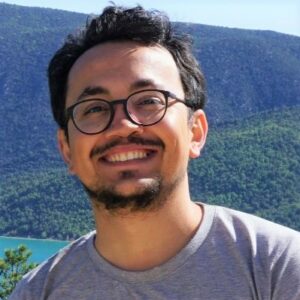
Gokhan Dogru
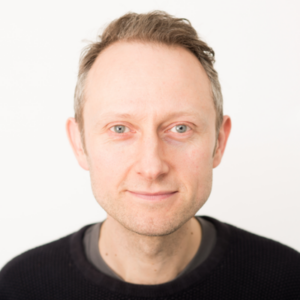
Joss Moorkens
A User Study on Machine Translation Finetuning with Custom Translation Memories in 3 Language Pairs
This study aims to address the usefulness of a custom, desktop neural machine translation (NMT) software collection for professional translators by investigating the effects of data augmentation, to ascertain the effectiveness of different amounts of data on the quality on a local NMT system running on Windows. We use OpusCAT (Nieminen, 2021), a desktop software collection that provides pretrained NMT models and a fine-tuning feature, with plug-ins to integrate with many CAT tools.
We measure the quality improvements, if any, in MT engines fine-tuned with custom corpora in the localization domain of different sizes (no extra corpus, 500K and 2M+ source words of corpora). The engines are trained in English → Turkish, English → Spanish, and English → Catalan language pairs using OpusCAT MT running on Windows.
The translation quality of these 9 engines is measured through automatic metrics (BLEU, TER and chrF3) and human evaluation metrics (adequacy, fluency and ranking) and the results are reported. Evaluating the quality of each engine with both automatic and human evaluation metrics allows us to observe how adding different sizes of custom parallel corpus affects MT translation quality which, in turn, provides insight about the usability of customizable, desktop MT software by translators.
Gokhan Dogru
Gokhan Dogru is a visiting postdoctoral researcher at ADAPT-DCU affiliated with the Faculty of Translation and Interpreting at Universitat Autònoma de Barcelona (UAB) in the framework of Margarita Salas Grant. His research interests include terminological quality evaluation in machine translation, different use cases of MT for professional translators and the intersection of translation profession and translation technologies as well as localization.
Joss Moorkens
Joss Moorkens is an Associate Professor at Dublin City University affiliated with the ADAPT Centre and Centre for Translation and Textual Studies. He is a board member of the European Masters in Translation network, General Co-editor of Translation Spaces, and publishes on the topics of translation technology.

Zhilu Tu
co-authors:
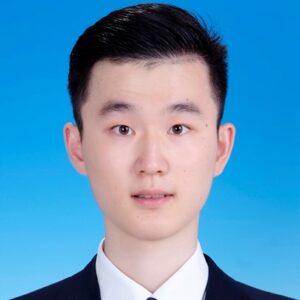
Minghao Wang

Mark Shuttleworth

Zhiwen Hua
Using bitext mining to identify translated material: practical assessment and new applications
Locating translated text can be thought of as a way of “reverse engineering” a complex translation job. By utilising tools from bitext mining, this study attempts to facilitate pre-trained models using techniques from natural language processing (NLP) within translation studies research as an example of how the approach may be applied in other contexts. Starting with a brief review of the development and application of text alignment, this study further substantiates the feasibility of bitext-mining in the case of Wikipedia’s translation and multilingual practice via a practical assessment of the reliability of auto-aligned results. The assessment method involves a study and in situ observations of Shuttleworth’s (2018) and more recent on-going work of finding translation fragments. The paper then describes new applications for bitext mining facilitated by improvements to alignment tools including a language model selection that may improve sensitivity to semantically or structurally close sentences; granular sentence segmentation that helps to reveal smaller translation units; and an interactive front-end design for highlighting the distribution of the alignments for users’ reference. The study thus provides an outlook on possible new applications of bitext mining.
Zhilu Tu
Zhilu Tu holds a master’s degree in translation and is currently a PhD Student in the Department of
Translation, Interpreting and Intercultural Studies at Hong Kong Baptist University. His research
interests lie primarily in Translation Studies and the area of Digital Humanities. His research aims
to use digital methods to explore humanities (translation) questions. At present, he is working on visualizing translation on social media such as Twitter and Weibo. The web–scraping and parallel–
sentence–mining techniques introduced in his research have also been adapted to explore the ‘dark matter’ in Wikipedia translation.
Minghao Wang
Minghao Wang obtained his M.Sc. (Distinction) from Hong Kong Baptist University and his B.Eng.
(Distinguished Graduate) from the Communication University of China. He focuses mainly on natural language processing, deep learning, statistic learning, and computational communication and on applications of all these techniques. He has worked on projects including fact–checking, bitext mining, topic modelling and audience research. Output from those projects has been and is being published.
Mark Shuttleworth
Mark Shuttleworth has been involved in translation studies research and teaching since 1993, at the University of Leeds, Imperial College London, University College London and, most recently, Hong Kong Baptist University. His publications include the Dictionary of Translation Studies, as well as articles on translation technology teaching, metaphor in translation, translation and the web, and Wikipedia translation. The use of digital methodologies in translation studies research is also an interest of his. His monograph on scientific metaphor in translation, Studying Scientific Metaphor in Translation, was published in 2017 and he is currently working on a second edition of the Dictionary.
Zhiwen Hua
Zhiwen Hua, a web Full–Stack Engineer, and holds a master’s degree in AI and Digital Media from
Hong Kong Baptist University. With five years’ experience in front–engineering, he has firstly been engaged in the development of school related systems in the Nanjing Institute of media. Now he is working for the Intellectual Property School of Jiangsu University, responsible for the development of intellectual property in the area of big data systems.

Anna Setkowicz-Ryszka
Why are generic MT engines of limited assistance to lawyers and legal academics wishing to communicate in English as the lingua franca? A reviser’s and post-editor’s perspective
This presentation summarizes around a decade of my encounters with machine translation (MT) of legal texts, as a reviser for a legal publishing house and a freelance translator/translator trainer. It is illustrated with examples from academic papers (mainly titles and abstracts), opinions, rules and regulations, as well as contracts in the PL-EN pair. Considerable improvements have been made in MT over the years – especially in terms of dealing with complex syntax and stilted language, but post-editing is still challenging due to lawyer’s failure to pre-edit texts or take into account the perspective of international readers. Typical MT errors, about which I warn fellow translators and trainees, include too liberal renditions (use of synonyms where consistent terminology is needed, fluency of target text at the expense of accuracy, hallucinations), too literal renditions (typos unnoticed by humans, polysemous words in context, Latin expressions), and references, both intertextual (quotes, titles, abbreviations) and intra-textual references. Translator trainees appreciate being made aware of such errors, often stressing that they initially put too much trust in MT output. However, it is both lawyers and translators that need to be aware of the limitations of MT and English as the lingua franca of law.
Anna Setkowicz-Ryszka, Doctoral School of Humanities, University of Lodz, Poland
Translator with 25 years’ experience, specializing in legal, financial and academic texts, sworn translator of English in Poland, legal translation trainer. Long-standing cooperation, including also revision and post-editing, with legal publishing houses and law firms. Doctoral student at the Doctoral School of Humanities, University of Lodz, Poland. Research interests: legal translation pedagogy; contract translation with special emphasis on boilerplate clauses; academic legal writing; plain legal language; machine translation post-editing in the field of law; translation process research; translator expertise.
Invited Speaker(s)
Sponsors' Leadership Talk Presenters

Jean-François Richard
GOLD Sponsor:

Title of Leadership talk to follow here
Abstract to follow
Jean-François Richard
Having a background in automated productivity and in electronics, I initially started my career in 1985 as a Computer Aided Design (CAD) technician before devoting myself to the field of computer aided translation tools (CAT) in 1994. Since then, and through different experiences of work, I acquired expertise in translation memory systems, terminology extraction tools, terminology management, machine translation, full text, bitexts and project management systems.
In 1994, I founded BridgeTerm (Now a Translation Management System) which acted as CAT broker. During my career and over the years, I developed and improved SynchroTerm, a bilingual terminology extraction tool allowing to feed terminology databases from translated documents.
In September 2006, Terminotix acquired SynchroTerm and I joined the team where I occupied the Sales Director position.
In April 2010, I acquired the company through a management buyout process and since then, I am the president of Terminotix. During the last two years, I have conducted research on generating automatically high quality alignments in any language pair in order to feed Neural Machine Translation engines, bilingual concordancers.
Early in 2020 and during the pandemic, I developed a bilingual website search engine called WeBiSearch available for free and for linguistic services. In Spring 2021, I released the Terminotix plugin for Windows allowing to translate from inside any application.

Judith Klein
GOLD Sponsor:
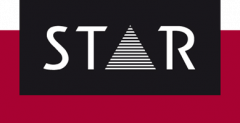
Title of Leadership talk to follow here
Abstract to follow
Jean-Françoise Richard
Having a background in automated productivity and in electronics, I initially started my career in 1985 as a Computer Aided Design (CAD) technician before devoting myself to the field of computer aided translation tools (CAT) in 1994. Since then, and through different experiences of work, I acquired expertise in translation memory systems, terminology extraction tools, terminology management, machine translation, full text, bitexts and project management systems.
In 1994, I founded BridgeTerm (Now a Translation Management System) which acted as CAT broker. During my career and over the years, I developed and improved SynchroTerm, a bilingual terminology extraction tool allowing to feed terminology databases from translated documents.
In September 2006, Terminotix acquired SynchroTerm and I joined the team where I occupied the Sales Director position.
In April 2010, I acquired the company through a management buyout process and since then, I am the president of Terminotix. During the last two years, I have conducted research on generating automatically high quality alignments in any language pair in order to feed Neural Machine Translation engines, bilingual concordancers.
Early in 2020 and during the pandemic, I developed a bilingual website search engine called WeBiSearch available for free and for linguistic services. In Spring 2021, I released the Terminotix plugin for Windows allowing to translate from inside any application.
